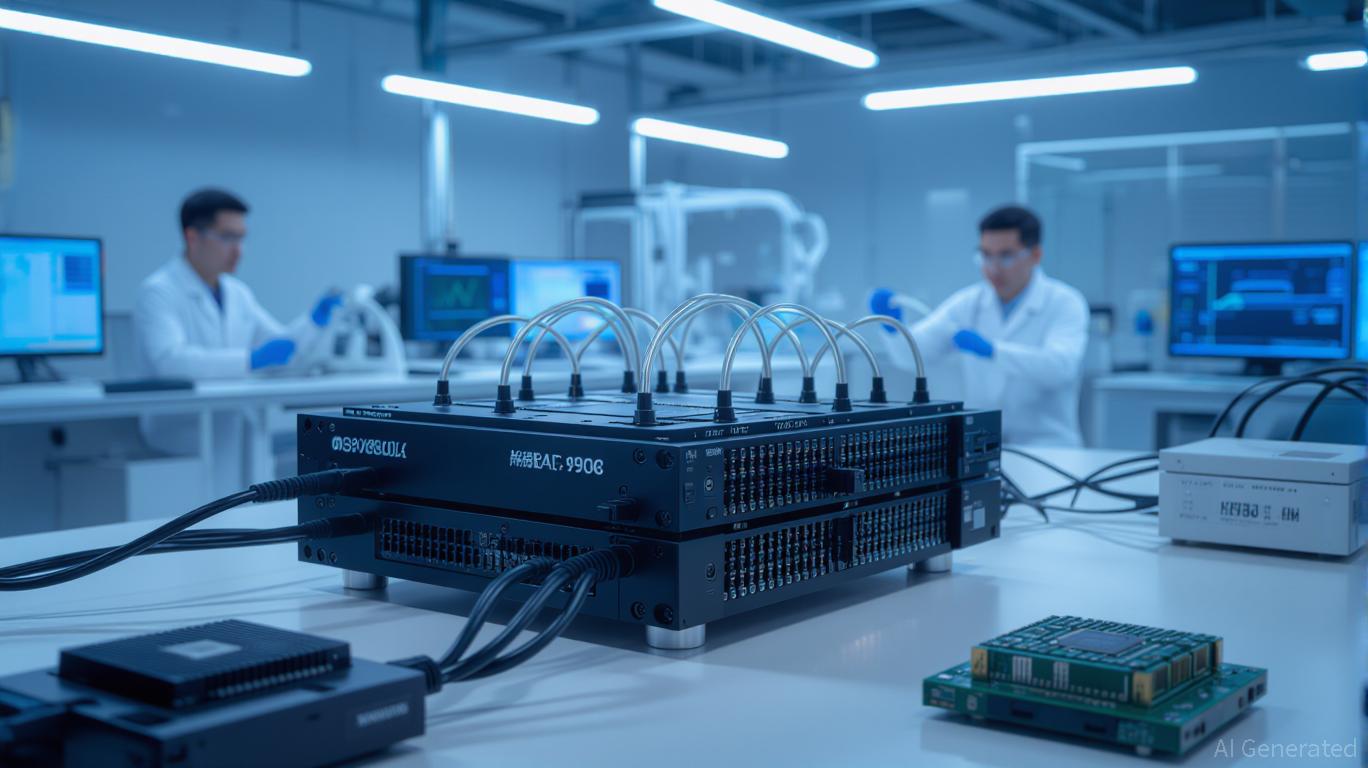The realm of computation is poised for a profound shift, potentially overshadowing the current enthusiasm surrounding AI. Novel technological advancements are set to reshape our methods of information processing, data retention, and human-machine interaction.
Beyond AI: The Next Frontier in Computing
While artificial intelligence has captured significant attention and funding in recent years, specialists caution that the subsequent major transformation in computing could emerge from entirely distinct breakthroughs. Quantum computing, neuromorphic processors, and cutting-edge photonics are some of the technologies positioned to profoundly reshape the realm of information technology. These developments offer not only enhanced processing capabilities but also fundamentally novel approaches to tackling challenges that conventional computers find difficult to resolve.
Quantum computing, in particular, has attracted global attention for its ability to perform complex calculations far beyond the reach of classical machines. Unlike traditional computers, which use bits as ones or zeros, quantum computers rely on qubits that can exist in multiple states simultaneously. This capability allows them to process massive datasets, optimize complex systems, and solve problems in cryptography, materials science, and pharmaceuticals at unprecedented speed. While practical, large-scale quantum machines remain in development, ongoing experiments are already demonstrating advantages in specialized applications such as molecular modeling and climate simulations.
Neuromorphic computing offers another exciting avenue. Drawing inspiration from the human brain, neuromorphic processors are engineered to replicate neural networks, boasting exceptional energy efficiency and impressive parallel processing power. Such systems excel at tasks like recognizing patterns, making decisions, and learning adaptively with far greater efficiency than traditional processors. By imitating biological networks, neuromorphic technology holds the promise of transforming sectors from robotics to self-driving cars, enabling machines to learn and adjust in ways that more closely resemble natural intelligence than current AI setups.
The emergence of photonics and novel computing paradigms
Photonics, or the use of light to perform computations, is gaining traction as an alternative to traditional silicon-based electronics. Optical computing can transmit and process data at the speed of light, reducing latency and energy consumption while dramatically increasing bandwidth. This technology could prove essential for data centers, telecommunications, and scientific research, where the volume and velocity of information are growing exponentially. Companies and research institutions worldwide are exploring ways to integrate photonics with conventional circuits, aiming to create hybrid systems that combine the best of both worlds.
Other novel methods, like spintronics and molecular computation, are also appearing. Spintronics utilizes the electron’s quantum spin property for data storage and manipulation, potentially offering memory and processing power superior to existing hardware. Molecular computing, which employs molecules for logical operations, presents the possibility of shrinking components past the boundaries of silicon chips. These technologies are still mostly in the experimental phase, yet they underscore the vast innovation occurring in the quest for computing beyond AI.
Societal and Industrial Ramifications
The impact of these new computing paradigms will extend far beyond laboratory research. Businesses, governments, and scientific communities are preparing for a world where problems previously considered intractable can be addressed in hours or minutes. Supply chain optimization, climate modeling, drug discovery, financial simulations, and even national security operations stand to benefit from faster, smarter, and more adaptive computing infrastructure.
The race to develop next-generation computing capabilities is global. Nations such as the United States, China, and members of the European Union are investing heavily in research and development programs, recognizing the strategic importance of technological leadership. Private companies, from established tech giants to nimble startups, are also pushing the boundaries, often in collaboration with academic institutions. The competition is intense, but it is also fostering rapid innovation that could redefine entire industries within the next decade.
As computational methods advance, they might also transform our understanding of how humans and machines interact. Sophisticated system designs could facilitate devices that grasp context with greater insight, execute intricate logical processes instantly, and foster cooperative issue resolution across diverse fields. In contrast to today’s artificial intelligence, which largely depends on pre-existing models and extensive data collections, these emerging innovations offer more fluid, adaptable, and effective answers to various difficulties.
Preparing for a post-AI computing landscape
For businesses and policymakers, the emergence of these technologies presents both opportunities and challenges. Organizations will need to rethink their IT infrastructure, invest in workforce training, and explore partnerships with research institutions to leverage cutting-edge innovations. Governments must consider regulatory frameworks that ensure responsible use, cybersecurity, and equitable access to transformative technologies.
Education will also be a crucial factor. Equipping the upcoming cohort of scientists, engineers, and analysts to engage with quantum systems, neuromorphic processors, and photonics-driven platforms will necessitate substantial revisions to academic programs and skill acquisition. Interdisciplinary expertise—merging physics, computer science, materials science, and practical mathematics—will be indispensable for individuals entering this domain.
Meanwhile, ethical considerations remain paramount. Novel computing frameworks have the potential to exacerbate current disparities if their availability is restricted to specific geographical areas or organizations. Decision-makers and tech innovators are tasked with harmonizing the pursuit of progress with the imperative to guarantee that the advantages of sophisticated computing are distributed equitably throughout society.
The trajectory of artificial intelligence and its applications
Although artificial intelligence continues to capture global attention, it is only part of a larger wave of technological advancement. The next era of computing may redefine what machines can do, from solving intractable scientific problems to creating adaptive, brain-inspired systems capable of learning and evolving on their own. Quantum, neuromorphic, and photonic technologies represent the frontier of this shift, offering speed, efficiency, and capabilities that transcend today’s digital landscape.
As the boundaries of possibility expand, researchers, industries, and governments are preparing to navigate a world where computing power is no longer a limiting factor. The next decade could witness a seismic shift in technology that changes how humans interact with information, machines, and the environment—an era where computing itself becomes a transformative force, far beyond the shadow of AI.



:format(jpg)/f.elconfidencial.com%2Foriginal%2Fb4b%2F704%2F3a9%2Fb4b7043a96f4f72460b218db5912e73f.jpg)
